Mybatis和SpringBoot
Posted LZ名約山炮
tags:
篇首语:本文由小常识网(cha138.com)小编为大家整理,主要介绍了Mybatis和SpringBoot相关的知识,希望对你有一定的参考价值。
一、MyBatis
1. MyBatis简介
资料下载:https://pan.baidu.com/s/16P3uVfRuViM3hu514rO_6Q 提取码:5qi7
JDBC的弊端:SQL夹在Java代码块里,耦合度高导致硬编码内伤,维护不易。而实际开发需求中sql是有变化,频繁修改的情况多见。
Hibernate(全自动全映射的ORM框架)的弊端,自动生产的多长、难、复杂SQL,不容易做特殊优化。
Mybatis是一个java编写的轻量级的半自动的ORM映射的Dao层框架,在学习Mybatis之前,我们已经接触过原生JDBC的方式。对开发人员而言,核心sql还是需要自己优化+掌握在自己手上,简单来说,就是一句话,sql和java编码分开,功能边界清晰;一个专注业务、一个专注数据;二者之间通过简单的XML或注解用于配置和原始映射,将接口和Java的POJO映射成数据库中的记录,完成业务代码+底层数据库的媒介。Mybatis的最大优点: Java代码与SQL分层解耦
原是apache的一个开源项目iBatis, 2010年这个项目由apache software foundation 迁移到了google code,随着开发团队转投Google Code旗下,ibatis3.x正式更名为Mybatis ,代码于2013年11月迁移到Github(下载地址:https://github.com/mybatis/mybatis-3/releases)
iBATIS一词来源于“internet”和“abatis”的组合,是一个基于Java的持久层框架。iBATIS提供的持久层框架包括SQL Maps和Data Access Objects(DAO),MyBatis消除了几乎所有的JDBC代码和参数的手工设置以及对结果集的检索封装。MyBatis可以使用简单的XML或注解用于配置和原始映射,将接口和Java的POJO(Plain Old Java Objects,普通的Java对象)映射成数据库中的记录,本质是一个将SQL语句map到JAVA POJO的框架。
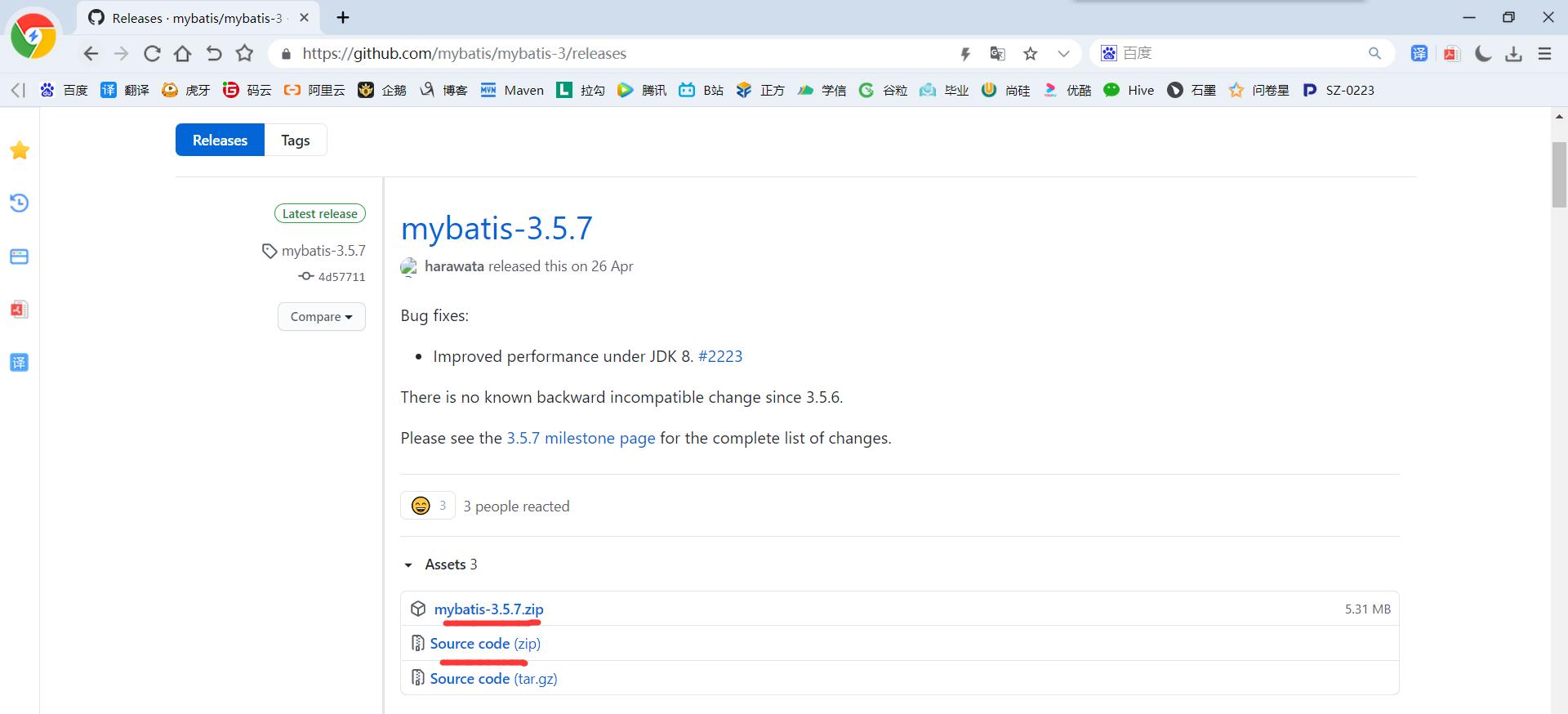
2. 准备工作
1)建库建表
CREATE TABLE tbl_employee( id INT(11) PRIMARY KEY AUTO_INCREMENT, last_name VARCHAR(255), gender VARCHAR(10), email VARCHAR(255) ); INSERT INTO tbl_employee(last_name,gender,email) VALUES(\'Tom\',\'male\',\'Tom@163.com\'); INSERT INTO tbl_employee(last_name,gender,email) VALUES(\'Jack\',\'male\',\'Jack@163.com\'); INSERT INTO tbl_employee(last_name,gender,email) VALUES(\'Marry\',\'female\',\'Tom@163.com\');
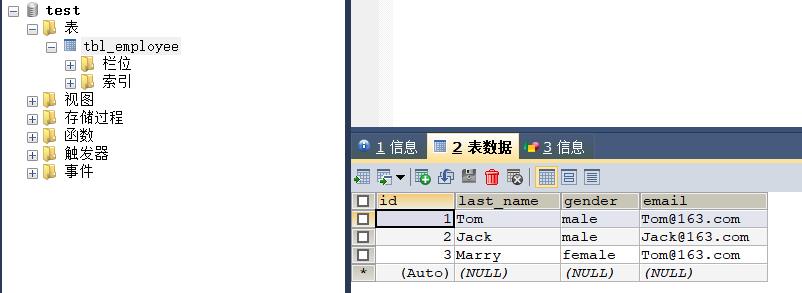
2)建工程,导jar包
<!-- https://mvnrepository.com/artifact/org.mybatis/mybatis --> <dependency> <groupId>org.mybatis</groupId> <artifactId>mybatis</artifactId> <version>3.4.6</version> </dependency> <!-- https://mvnrepository.com/artifact/mysql/mysql-connector-java --> <dependency> <groupId>mysql</groupId> <artifactId>mysql-connector-java</artifactId> <version>5.1.47</version> </dependency> <!-- https://mvnrepository.com/artifact/org.projectlombok/lombok --> <dependency> <groupId>org.projectlombok</groupId> <artifactId>lombok</artifactId> <version>1.18.12</version> <scope>provided</scope> </dependency> <!-- https://mvnrepository.com/artifact/junit/junit --> <dependency> <groupId>junit</groupId> <artifactId>junit</artifactId> <version>4.12</version> <scope>provided</scope> </dependency>
3)POJO对象:Employee类
package com.yuange.mybatis.entity;
import lombok.AllArgsConstructor;
import lombok.Data;
import lombok.NoArgsConstructor;
/**
* @作者:袁哥
* @时间:2021/6/29 10:26
*/
@NoArgsConstructor
@AllArgsConstructor
@Data
public class Employee {
private Integer id;
private String lastName;
private String gender;
private String email;
}
4)加入log4j的配置文件
5)加入mybatis的配置文件
<?xml version="1.0" encoding="UTF-8" ?>
<!DOCTYPE configuration
PUBLIC "-//mybatis.org//DTD Config 3.0//EN"
"http://mybatis.org/dtd/mybatis-3-config.dtd">
<configuration>
<!-- environmets标签里可以配置多个environment标签 -->
<environments default="development">
<!-- 一个environmet就代表一个数据库运行环境 -->
<environment id="development">
<!-- transactionManager:事务管理器 -->
<transactionManager type="JDBC" />
<!--dataSource:数据源,需要配置用户名,密码,驱动,连接 -->
<dataSource type="POOLED">
<property name="driver" value="com.mysql.jdbc.Driver" />
<property name="url" value="jdbc:mysql://hadoop102:3306/test" />
<property name="username" value="root" />
<property name="password" value="root123" />
</dataSource>
</environment>
</environments>
<mappers>
<mapper resource="mybatisMapper.xml"/>
<!-- 后面会创建它 -->
<mapper resource="mybatisMapper2.xml"/>
</mappers>
</configuration>
3. Helloworld
mybatis的优点在于java代码和sql语句相分离,sql语句编写在xxxMapper文件中,同时注意需要在全局配置文件中注册
<?xml version="1.0" encoding="UTF-8" ?>
<!DOCTYPE mapper
PUBLIC "-//mybatis.org//DTD Mapper 3.0//EN"
"http://mybatis.org/dtd/mybatis-3-mapper.dtd">
<mapper namespace="EmpMapper">
<select id="selectEmp" resultType="com.yuange.mybatis.entity.Employee">
select id,last_name lastName,gender,email from tbl_employee where id = #{id}
</select>
</mapper>
package com.yuange.mybatis.test; import com.yuange.mybatis.entity.Employee; import org.apache.ibatis.io.Resources; import org.apache.ibatis.session.SqlSession; import org.apache.ibatis.session.SqlSessionFactory; import org.apache.ibatis.session.SqlSessionFactoryBuilder; import java.io.IOException; import java.io.InputStream; /** * @作者:袁哥 * @时间:2021/6/29 11:50 */ public class MybatisTestOne { public static void main(String[] args) throws IOException { //从mybatis-config.xml配置文件中构建sqlSessionFactory String resource = "mybatis-config.xml"; InputStream inputStream = Resources.getResourceAsStream(resource); SqlSessionFactory sqlSessionFactory = new SqlSessionFactoryBuilder().build(inputStream); //使用sqlSessionFactory创建sqlSession SqlSession sqlSession = sqlSessionFactory.openSession(); Employee employee = (Employee) sqlSession.selectOne("EmpMapper.selectEmp", 1); System.out.println(employee.toString()); } }

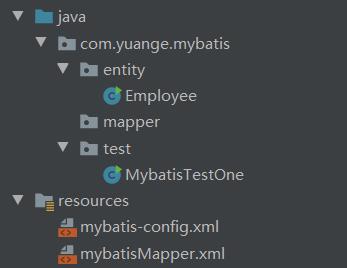
4. 接口式编程
使用原生API进行开发有以下不便之处:
①我们更倾向于使用Dao---DaoImpl来分层解耦
②方法的返回值,是Object类型,不能直接使用,需要强转
③方法的入参无法进行严格的检查
因此,在后续的mybatis版本中,推荐使用接口式编程开发!
1)编写接口,mybatis习惯上以mapper作为接口文件的命名
package com.yuange.mybatis.mapper;
import com.yuange.mybatis.entity.Employee;
import java.util.List;
/**
* @作者:袁哥
* @时间:2021/6/29 14:23
*/
public interface EmployeeMapper {
public Employee getEmployeeById(Integer id);
void deleteEmployeeById(Integer id);
void insertEmployee(Employee employee);
void updateEmployee(Employee employee);
List<Employee> getAll();
}
2)编写sql语句的配置文件,并与接口中的方法进行绑定,所以新建mybatisMapper2.xml
<?xml version="1.0" encoding="UTF-8" ?>
<!DOCTYPE mapper
PUBLIC "-//mybatis.org//DTD Mapper 3.0//EN"
"http://mybatis.org/dtd/mybatis-3-mapper.dtd">
<mapper namespace="com.yuange.mybatis.mapper.EmployeeMapper">
<select id="getEmployeeById"
resultType="com.yuange.mybatis.entity.Employee" >
select id,last_name lastName,gender,email from tbl_employee where id=#{id}
</select>
<delete id="deleteEmployeeById">
delete from tbl_employee where id = #{id}
</delete>
<update id="updateEmployee">
update tbl_employee set last_name=#{lastName},gender=#{gender},email=#{email}
where id = #{id}
</update>
<insert id="insertEmployee">
insert into tbl_employee(last_name,gender,email) values(#{lastName},#{gender},#{email})
</insert>
<select id="getAll" resultType="com.yuange.mybatis.entity.Employee">
select id,last_name lastName,gender,email
from tbl_employee
</select>
</mapper>
要求:
①namespace:必须和接口的全类名一致
②sql 的id必须和对应的方法名一致
③select 标签中,返回值类型及参数类型也必须和对应的方法一致,parameterType参数类型也可以不写,mybatis会根据 typeHandler自动判断
3)通过sqlsession的getMapper()方法获取接口的代理对象,执行其方法
package com.yuange.mybatis.mapper; import com.yuange.mybatis.entity.Employee; import org.apache.ibatis.io.Resources; import org.apache.ibatis.session.SqlSession; import org.apache.ibatis.session.SqlSessionFactory; import org.apache.ibatis.session.SqlSessionFactoryBuilder; import org.junit.Test; import java.io.IOException; import java.io.InputStream; import java.util.List; /** * @作者:袁哥 * @时间:2021/6/29 14:46 */ public class EmployeeMapperTest { SqlSessionFactory sqlSessionFactory; { //从mybatis-config.xml配置文件中构建sqlSessionFactory String resource = "mybatis-config.xml"; InputStream inputStream = null; try { inputStream = Resources.getResourceAsStream(resource); } catch (IOException e) { e.printStackTrace(); } sqlSessionFactory = new SqlSessionFactoryBuilder().build(inputStream); } @Test public void getEmployeeById() { SqlSession session = sqlSessionFactory.openSession(true); try { EmployeeMapper mapper = session.getMapper(EmployeeMapper.class); Employee employee = mapper.getEmployeeById(1); System.out.println(employee); }finally { session.close(); } } @Test public void deleteEmployeeById() { SqlSession session = sqlSessionFactory.openSession(true); try { EmployeeMapper mapper = session.getMapper(EmployeeMapper.class); System.out.println("删除之前=="+mapper.getEmployeeById(2)); mapper.deleteEmployeeById(2); System.out.println("删除之后=="+mapper.getEmployeeById(2)); }finally { session.close(); } } @Test public void insertEmployee() { SqlSession session = sqlSessionFactory.openSession(true); try { EmployeeMapper mapper = session.getMapper(EmployeeMapper.class); mapper.insertEmployee(new Employee(2,"zhangsan","male","zhangsan@qq.com")); System.out.println("添加之后=="+mapper.getAll()); }finally { session.close(); } } @Test public void updateEmployee() { SqlSession session = sqlSessionFactory.openSession(true); try { EmployeeMapper mapper = session.getMapper(EmployeeMapper.class); System.out.println("修改之前=="+mapper.getEmployeeById(2)); mapper.updateEmployee(new Employee(2,"王五","male","王五@qq.com")); System.out.println("修改之后=="+mapper.getEmployeeById(2)); }finally { session.close(); } } @Test public void getAll() { SqlSession session = sqlSessionFactory.openSession(true); try { EmployeeMapper mapper = session.getMapper(EmployeeMapper.class); List<Employee> all = mapper.getAll(); for (Employee employee : all) { System.out.println(employee); } }finally { session.close(); } } }
5. SqlSession的细节
①sqlSession 代表和数据库的一次会话。sqlSession不是线程安全的,不能被共享!因此它的范围最好是一个方法对应自己的sqlSession,或一次请求,创建一个sqlSession。
②SqlSession在每次方法执行完成之后,必须保证关闭,因此我们常常在方法的finally语句块中,执行其close()方法,将其关闭。
二、SpringBoot
1. SpringBoot简介
官网地址:https://spring.io/projects/spring-boot
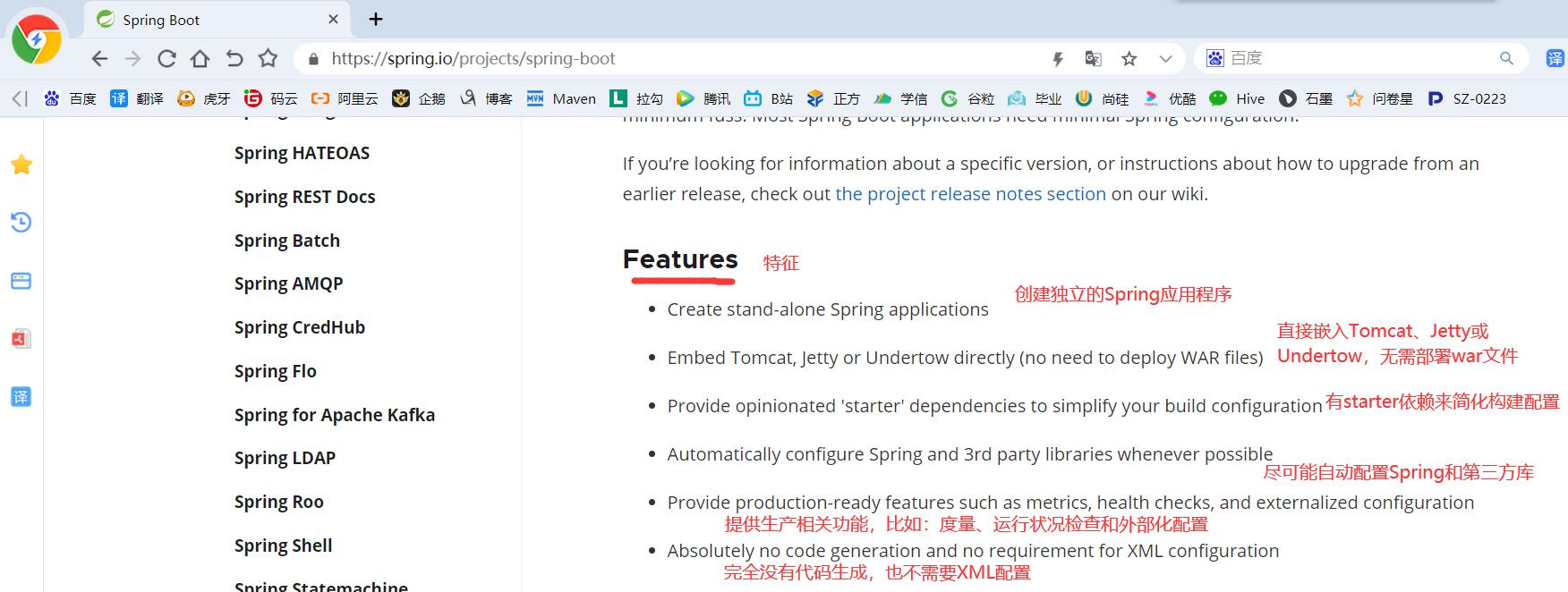
SpringBoot的作用是为了在使用Spring的应用进行开发时,简化配置,并且以最简单的方式来整合第三方的应用,例如Redis,Mybatis,SpringBoot等
2. SpringBoot入门
1)创建SpringBoot工程,并整合Mybatis(由于系统无低版本的SpringBoot,所以我们创建好之后需要将版本修改为 1.5.10.RELEASE)

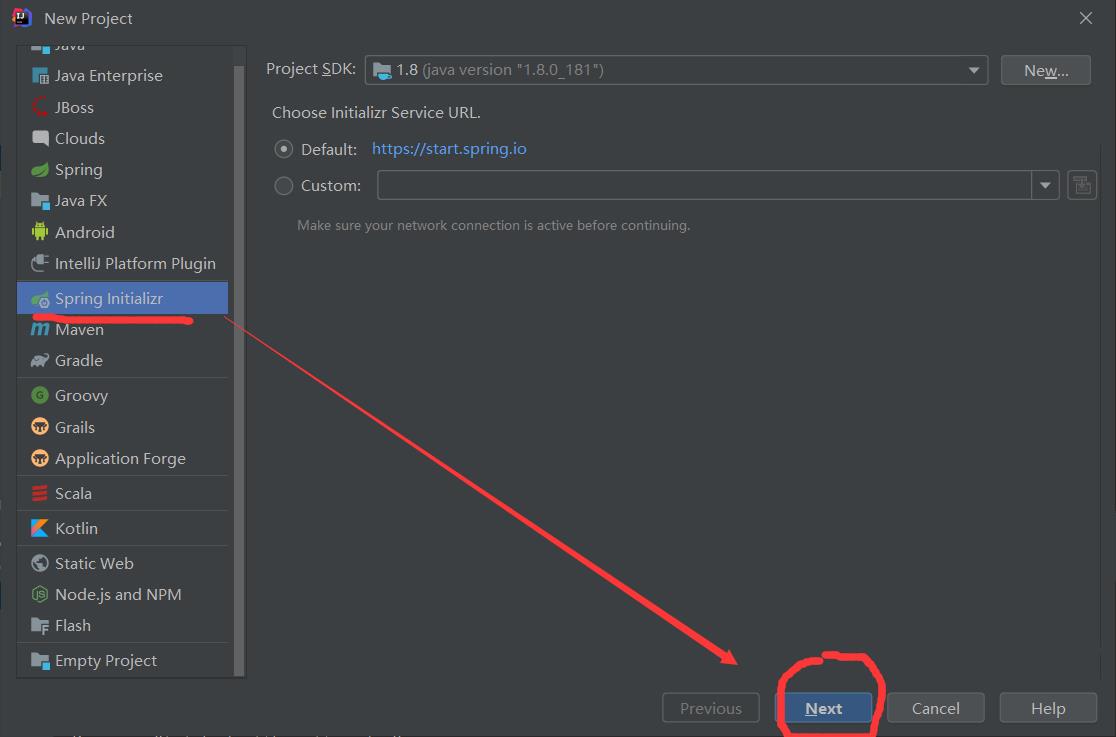





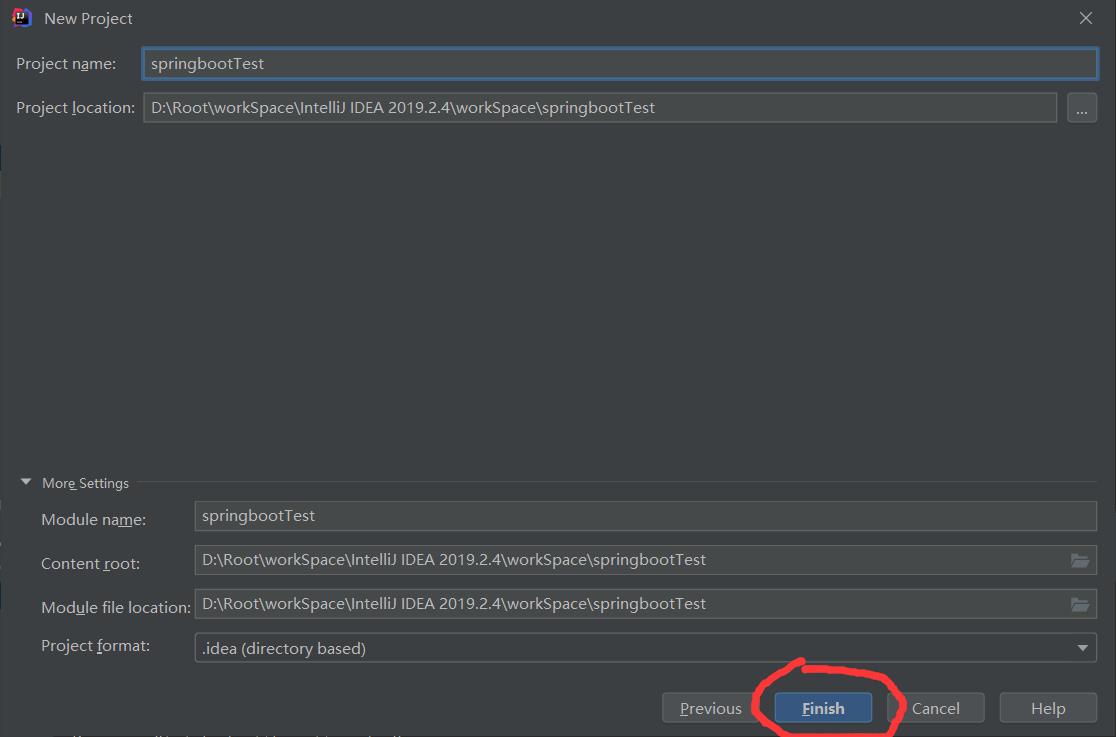
<?xml version="1.0" encoding="UTF-8"?>
<project xmlns="http://maven.apache.org/POM/4.0.0" xmlns:xsi="http://www.w3.org/2001/XMLSchema-instance"
xsi:schemaLocation="http://maven.apache.org/POM/4.0.0 https://maven.apache.org/xsd/maven-4.0.0.xsd">
<modelVersion>4.0.0</modelVersion>
<parent>
<groupId>org.springframework.boot</groupId>
<artifactId>spring-boot-starter-parent</artifactId>
<version>1.5.10.RELEASE</version>
<relativePath/> <!-- lookup parent from repository -->
</parent>
<groupId>com.yuange.springboot</groupId>
<artifactId>springboottest</artifactId>
<version>0.0.1-SNAPSHOT</version>
<name>springboottest</name>
<description>Demo project for Spring Boot</description>
<properties>
<java.version>1.8</java.version>
</properties>
<dependencies>
<dependency>
<groupId>org.springframework.boot</groupId>
<artifactId>spring-boot-starter-web</artifactId>
</dependency>
<dependency>
<groupId>org.mybatis.spring.boot</groupId>
<artifactId>mybatis-spring-boot-starter</artifactId>
<version>2.2.0</version>
</dependency>
<!--<dependency>
<groupId>mysql</groupId>
<artifactId>mysql-connector-java</artifactId>
</dependency>
<dependency>
<groupId>com.alibaba</groupId>
<artifactId>druid</artifactId>
<version>1.0.5</version>
</dependency>-->
<dependency>
<groupId>org.projectlombok</groupId>
<artifactId>lombok</artifactId>
<optional>true</optional>
</dependency>
<dependency>
<groupId>org.springframework.boot</groupId>
<artifactId>spring-boot-starter-test</artifactId>
<scope>test</scope>
</dependency>
</dependencies>
<build>
<plugins>
<plugin>
<groupId>org.springframework.boot</groupId>
<artifactId>spring-boot-maven-plugin</artifactId>
<configuration>
<excludes>
<exclude>
<groupId>org.projectlombok</groupId>
<artifactId>lombok</artifactId>
</exclude>
</excludes>
</configuration>
</plugin>
</plugins>
</build>
</project>
2)查看SpringBoot项目的主启动类

3)创建Handler处理器
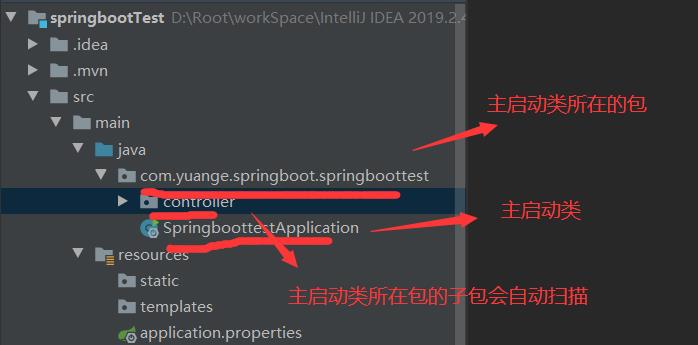
package com.yuange.springboot.springboottest.controller;
import org.springframework.stereotype.Controller;
import org.springframework.web.bind.annotation.RequestMapping;
import org.springframework.web.bind.annotation.ResponseBody;
/**
* @作者:袁哥
* @时间:2021/6/29 20:38
*/
@Controller
public class HelloWorld {
@ResponseBody
@RequestMapping("/hello")
public String helloWorld(){
return "你好丫,我是SpringBoot";
}
}
4)运行主启动类中的main方法启动SpringBoot程序(若启动报Cannot determine embedded database driver class for database type NONE,则先将Mybatis的依赖先注释掉)


5)通过浏览器访问应用

3. SpringBoot下的配置文件
SpringBoot环境下常用的配置文件有两种,一种是properties属性文件,一种是yml文件。二者各有特点,语法也有很大区别,但是最终效果基本一致。
3.1 使用Properties文件进行配置
文件名:application.properties
语法格式:属性名=属性值
3.2 yml语法配置
yml是YAML(YAML Ain\'t Markup Language)语言的文件,以数据为中心,比json、xml等更适合做配置文件。
yml语法:
1)使用缩进表示层级关系
2)缩进时不允许使用Tab键,只允许使用空格。
3)缩进的空格数目不重要,只要相同层级的元素左侧对齐即可
4)大小写敏感
YAML 支持的三种数据结构:
1)对象:键值对的集合
2)数组:一组按次序排列的值
3)字面量:单个的、不可再分的值
#例如
spring: application: name: apple server: port: 8181 context-path: /banan
4. 整合Mybatis
1)加入MySQL的依赖和Druid依赖(需要将Mybatis依赖的注释打开)

<dependency> <groupId>mysql</groupId> <artifactId>mysql-connector-java</artifactId> </dependency> <dependency> <groupId>com.alibaba</groupId> <artifactId>druid</artifactId> <version>1.0.5</version> </dependency>
2)在application.yml中增加数据库环境配置信息
spring:
datasource:
name: mysqlTest
type: com.alibaba.druid.pool.DruidDataSource
url: jdbc:mysql://hadoop102:3306/test?characterEncoding=utf-8
username: root
password: root123
driver-class-name: com.mysql.jdbc.Driver
mybatis:
mapper-locations: classpath*:/mybatis/*Mapper.xml
3)在主启动类上,使用注解指定要扫描的包,会为此报下的接口创建代理对象
@MapperScan("com.yuange.springboot.springboottest.mapper")

4)创建Employee类
package com.yuange.springboot.springboottest.entity; import lombok.AllArgsConstructor; import lombok.Data; import lombok.NoArgsConstructor; /** * @作者:袁哥 * @时间:2021/6/29 10:26 */ @NoArgsConstructor @AllArgsConstructor @Data public class Employee { private Integer id; private String lastName; private String gender; private String email; public static void main(String[] args) { Employee employee = new Employee(1, "zhangsna", "男", "132@qq.com"); System.out.println(employee.getEmail()); employee.setEmail("www@qq.com"); System.out.println(employee.getEmail()); } }
5)创建 EmployeeMapper 接口
package com.yuange.springboot.springboottest.mapper;
import com.yuange.springboot.springboottest.entity.Employee;
import org.springframework.stereotype.Repository;
import java.util.List;
/**
* @作者:袁哥
* @时间:2021/6/29 14:23
*/
@Repository
public interface EmployeeMapper {
Employee getEmployeeById(Integer id);
void deleteEmployeeById(Integer id);
void insertEmployee(Employee employee);
void updateEmployee(Employee employee);
List<Employee> getAll();
}
6)在application.properties文件中添加以下内容
#配置访问路径前缀 server.context-path=/mywebapp #配置端口号 server.port=8099 #开启驼峰命名 mybatis.configuration.mapUnderscoreToCamelCase=true
7)在resources/mybatis 文件夹中创建 EmployeeMapper.xml
<?xml version="1.0" encoding="UTF-8" ?> <!DOCTYPE mapper PUBLIC "-//mybatis.org//DTD Mapper 3.0//EN" "http://mybatis.org/dtd/mybatis-3-mapper.dtd"> <mapper namespace="com.yuange.springboot.springboottest.mapper.EmployeeMapper"> <select id="getEmployeeById" resultType="com.yuange.springboot.springboottest.entity.Employee" > select id,last_name lastName,gender,email from tbl_employee where id=#{id} </select> <delete id="deleteEmployeeById"> delete from tbl_employee where id = #{id} </delete> <update id="updateEmployee"> update tbl_employee set last_name=#{lastName},gender=#{gender},email=#{email} where id = #{id} </update> <insert id="insertEmployee"> insert into tbl_employee(last_name,gender,email) values(#{lastName},#{gender},#{email}) </insert> <select id="getAll" resultType="com.yuange.springboot.springboottest.entity.Employee"> select id,last_name lastName,gender,email from tbl_employee </select> </mapper>
8)在resources/static 文件夹中创建 index.html
<!DOCTYPE html> <html lang="en"> <head> <meta charset="UTF-8"> <title>首页</title> </head> <body> <h1>这是首页</h1><br/> <hr/> <form action="/mywebapp/emp" method="post" > <input name="op" value="select" type="radio">查询</input> <input name="op" value="delete" type="radio">删除</input> <input name="op" value="update" type="radio">更新</input> <input name="op" value="insert" type="radio">新增</input> <br/> <input name="id" value="1" > <br/> <input name="lastName" value="jack" > <br/> <input name="email" value="jack@qq.com" > <br/> <input name="gender" value="male" > <br/> <input value="提交按钮" type="submit" > </form> </body> </html>
9)在resources/static 文件夹中创建 success.html
<!DOCTYPE html> <html lang="en"> <head> <meta charset="UTF-8"> <title>成功页面</title> </head> <body> <h1<以上是关于Mybatis和SpringBoot的主要内容,如果未能解决你的问题,请参考以下文章
SpringBoot:4.SpringBoot整合Mybatis实现数据库访问